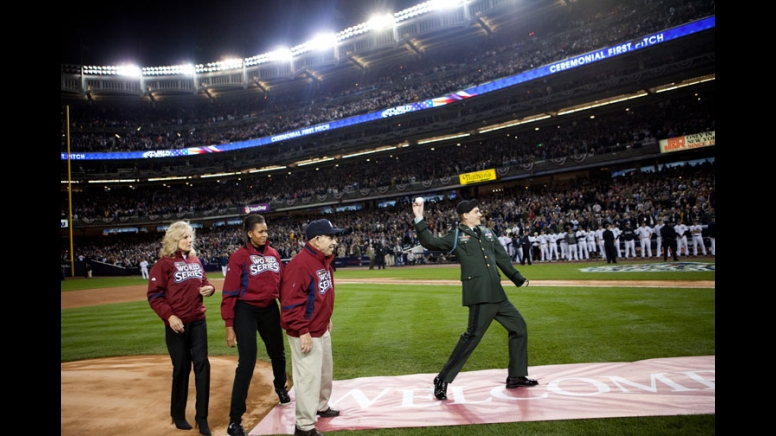By Emily D. Anderson, WTC STRATCOM

AW2 Veteran Robert Murafsky shares his transition story publicly to inspire wounded, ill, and injured Soldiers and Veterans and gain support for the AW2 community. (Photo Credit: Sanchez Santos)
Most people consider speaking about themselves a challenge, especially if it is to a crowd of people. Army Wounded Warrior Program (AW2) Veteran Robert Murafsky tackled this task in order to provide insights about thriving in today’s workforce as an AW2 Veteran.
“I knew I wanted to be a Soldier since I was a little kid watching the Army commercials on television,” said the Metuchen, N.J. native. “I thought when I joined the military, I would serve 20-plus years, retire, and spend the rest of my life fishing and falling asleep in my reclining chair.”
“However, my reality changed once I was wounded because I had to recover and refocus,” Murafsky added. “If it wasn’t for great programs like the Army Wounded Warrior Program, I wouldn’t have the job I have today working as an Army civilian.”
On August 28, 2006, while performing a search mission during a deployment in Hit, Iraq in support of Operation Iraqi Freedom, an enemy sniper shot Murafsky in the face damaging his right eye.
“A few minutes into the search I felt an awful pain, heard a loud ringing, and everything started to go in slow motion,” Murafsky said. “I remember putting my hand to my face, pulling it back, and seeing lots of blood.”
He was taken to the Forward Operating Base for an initial assessment, then airlifted to a nearby base for surgery. After surgery, he was medically evacuated to Walter Reed Army Medical Center.
Despite a catastrophic injury, Murafsky navigated through the rehabilitation process, transitioned out of the military in May 2007, and qualified for AW2.
AW2 supports Soldiers and their Families throughout their recovery and transition, even into Veteran status. This program, through the local support of AW2 Advocates, strives to foster the Soldier’s independence.
“I told my Advocate I was searching for a job, gave her my resume, and the next thing I know I’m being told to come in for an interview,” he said. “I have no idea what happened between giving her my resume and getting that phone call, but I know she had something to do with it.”
Murafsky currently works as a security specialist for the Department of the Army Assistant Chief of Staff for Installation Management.
“My first day working as an Army civilian was great because it kind of made me feel like I was back in the Army,” Murafsky said. “This job makes feel like I am helping out the Army. It may be in a small way, but I consider myself part of the Army still.”
“This job has been great, and I feel like they didn’t hire me to check a box but to actually help a wounded warrior,” he added. “They put me in touch with programs to receive equipment that would help me with my disability and allow me to work in the best conditions possible.”
One program he finds particularly helpful is the DoD Computer/Electronic Accommodations Program (CAP).
CAP ensures that people with disabilities and wounded servicemembers have equal access to the information environment and opportunities in the Department of Defense and throughout the federal government.
“We provide the equipment to allow people like Robert equal access to everything,” said Kameelah Montgomery, acquisition team leader of CAP. “There’s technology out there for these Soldiers and Veterans.”
Some examples of technology available for those who are blind or have low vision include Braille displays and translators, large print keyboards, or a compact and portable version of a closed-circuit television.
“They can receive it free of charge while in uniform,” she added. “It’s theirs to keep forever because we want them to go out and be successful.”
To learn more about how to hire a Veteran at your organization, including an online toolkit and educational video for hiring managers, visit the Warrior Transition Command at www.WTC.army.mil/employers or for information about CAP, visit http://www.cap.mil.







